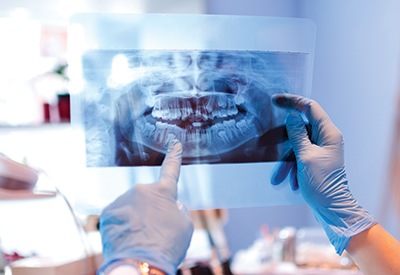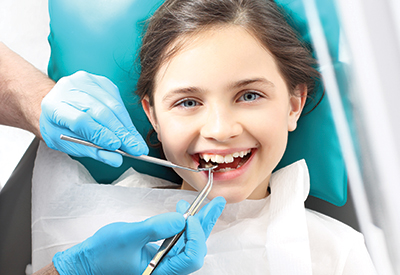
İstanbul Galata Üniversitesi Diş Hekimliği Fakültesi Hastanesi
Oral, Dental, and Maxillofacial Surgery

Oral and maxillofacial surgery, a specialized field situated at the crossroads of dentistry and medicine, deals with various surgeries within or around the oral region. This field is dedicated to diagnosing and treating a broad spectrum of conditions affecting the mouth, jaw, face, and neck. Within this domain, oral maxillofacial surgeons exhibit a high level of expertise, possessing a profound understanding of both dental and medical principles. They employ advanced surgical techniques to address complex issues and restore optimal function and aesthetics to their patients' oral and facial structures.
Treatment Protocols:
1. Tooth Extraction: Basic tooth removal, also known as simple dental extraction, is a common procedure performed in oral surgery to remove a tooth from its socket in the jawbone. This procedure is typically conducted under local anesthesia, although sedation or general anesthesia may be administered for anxious or medically compromised patients.
A. Assessment and Examination: Before the extraction, the oral surgeon assesses the tooth and surrounding structures through clinical examination and possibly imaging techniques such as X-rays. This helps in planning the extraction and identifying any potential complications.
B. Anesthesia: Local anesthesia is administered to numb the area around the tooth to be extracted. In some cases, sedation may also be provided to relax the patient during the procedure.
C. Extraction: Using specialized instruments such as forceps and elevators, the oral surgeon carefully loosens the tooth from its socket in the jawbone. The tooth is gently rocked back and forth to widen the socket and facilitate its removal.
D. Closure: Once the tooth is successfully extracted, the oral surgeon may place a gauze pad over the extraction site to control bleeding and promote clot formation. In some cases, stitches may be required to close the extraction site, especially if multiple teeth are removed or if the extraction is more complex.
E. Post-Operative Care: The patient is given instructions on how to care for the extraction site to promote healing and prevent complications such as infection. This may include avoiding certain foods, avoiding vigorous rinsing or spitting, and taking prescribed medications as directed.
F. Follow-Up: A follow-up appointment may be scheduled to monitor healing and ensure there are no complications. In some cases, additional treatments such as placement of dental implants or prosthetics may be planned after the extraction site has healed.
2. Dentoalveolar Surgeries: These surgeries encompass procedures related to the teeth and their supporting structures, including tooth extraction, apicoectomy, frenectomy, and alveoloplasty, among others, to tackle various dental issues and restore oral health.
A. Tooth Extraction: This surgical procedure involves the removal of a tooth from its socket in the jawbone. Tooth extraction may be necessary for various reasons, including severe decay, advanced periodontal disease, trauma, or orthodontic treatment.
B. Apicoectomy: Also known as root-end resection, an apicoectomy involves the removal of the tip of a tooth's root and the surrounding infected tissue. This procedure is typically performed when root canal treatment fails to resolve an infection in the tooth's root.
C. Frenectomy: A frenectomy is the surgical removal of a frenulum, a small fold of tissue that connects the lips, cheeks, or tongue to the gums or underlying tissues. This procedure is often performed to address issues such as restricted movement or speech impediments caused by an overly tight frenulum.
D. Alveoloplasty: Alveoloplasty is a surgical procedure performed to reshape or smooth the jawbone's ridges (alveolar bone) following tooth extraction. It aims to ensure proper healing of the extraction site and facilitate the placement of dental prosthetics, such as dentures or dental implants.
E. Gingivectomy: Gingivectomy involves the surgical removal of excess gum tissue to treat conditions such as gum disease (periodontitis) or to improve the aesthetic appearance of the gums. This procedure helps to reduce pocket depths and restore gum health.
These surgeries are conducted with meticulous precision and often require local anesthesia to ensure patient comfort. Additionally, advanced techniques and technologies may be employed to optimize outcomes and minimize post-operative discomfort. Dentoalveolar surgeries play a crucial role in preserving oral health, alleviating pain, and restoring function and aesthetics to the oral cavity.
3. Wisdom Tooth Removal (Third Molar Surgery): This procedure entails the surgical extraction of impacted or problematic wisdom teeth to avert complications such as infection, pain, and dental crowding. Wisdom Tooth Removal, also known as Third Molar Surgery, is a common dental procedure aimed at extracting the third molars located at the back of the mouth. These teeth, known as wisdom teeth, often erupt during late adolescence or early adulthood and can sometimes cause various issues such as impaction, infection, or crowding. The extraction procedure is typically performed by an oral surgeon under local or general anesthesia, depending on the complexity of the case and patient preference. Aftercare instructions are provided to promote healing and prevent complications.
4. Preprosthetic Surgery: Preprosthetic surgeries prepare the oral cavity for the successful placement of dental prosthetics, ensuring optimal fit, function, and longevity of prosthetic devices.
5. Dental Implant Surgery: Dental implant surgery involves the insertion of artificial tooth roots (implants) into the jawbone to support prosthetic teeth, bridges, or dentures. It provides a durable and efficacious solution for replacing missing teeth, restoring chewing function, and preserving jawbone density.
A. Dental Implant Surgery: Dental implant surgery is a procedure performed to replace missing teeth with artificial tooth roots made of titanium or titanium alloy. These implants are surgically placed into the jawbone where they integrate with the bone, providing a stable foundation for artificial teeth such as crowns, bridges, or dentures. Dental implant surgery is considered a highly effective and long-lasting solution for tooth loss, offering improved aesthetics, function, and oral health.
B. Hard and Soft Tissue Augmentation Techniques: Hard tissue augmentation techniques are procedures used to increase the volume or density of bone in the jaw to support dental implants or enhance aesthetic outcomes. These techniques may involve bone grafting, where bone material is harvested from the patient's own body, a donor, or synthetic sources, and placed in the deficient area of the jaw. Other methods include guided bone regeneration, where membranes or barriers are used to promote the growth of new bone, and sinus lift procedures to augment bone in the upper jaw. These techniques play a crucial role in ensuring the success and stability of dental implants in cases of insufficient bone volume.
6. Jaw Cyst/Tumor Operations: Oral surgeons perform surgeries to excise cysts and tumors that develop within the jaws, ensuring proper healing and preventing potential damage to surrounding structures.
7. Orthognathic Surgery: Orthognathic surgery aims to rectify abnormalities of the jaw and facial skeleton, including misalignments (malocclusions) resulting from developmental issues, trauma, or congenital conditions. This procedure enhances bite function, facial symmetry, and overall aesthetics.
8. TMJ (Temporomandibular Joint) Surgery: TMJ surgery addresses disorders affecting the temporomandibular joint, which can manifest as jaw pain, clicking or popping sounds, and restricted jaw movement. Surgical interventions may encompass arthroscopy, joint replacement, or joint repositioning procedures to alleviate pain and enhance jaw function.
9. Odontogenic Infections: Oral surgeons address infections originating from teeth and surrounding tissues through surgical drainage, debridement, and other interventions to impede the spread of infection and alleviate associated symptoms.
Jaw Fractures: Jaw fractures, also known as maxillo-mandibular fractures, are breaks or cracks in the bones of the jaw. These fractures can occur due to various reasons such as trauma from accidents, falls, sports injuries, or assault. Jaw fractures can result in pain, swelling, difficulty in chewing, speaking, and breathing, as well as changes in the alignment of teeth. Treatment of jaw fractures depends on the severity and location of the fracture.

Oral, Dental, and Maxillofacial Surgery
Oral and maxillofacial surgery, a specialized field situated at the crossroads of dentistry and medicine, deals with various surgeries within or ar
Detaya Git
Oral, Dental, and Maxillofacial Radiology
Department of Oral and Maxillofacial Radiology, where intraoral and head-neck region tissues and organs are systematically examined, and all change
Detaya Git
Pediatric Dentistry (Pedodontics)
Pedodontics is a branch of dentistry dedicated to children. It aims to establish oral and dental health at an early age by focusing on the preserva
Detaya Git
Orthodontics
It is a branch of dentistry that undertakes the diagnosis, treatment and prevention of crowded teeth, deviations in the jaws and facial irregularit
Detaya Git
Endodontics
The diagnosis, treatment, and prevention of illnesses and injuries affecting the dental pulp and adjacent tissues are the main goals of the special
Detaya Git
Prosthetic Dental Treatment
It is the branch of dentistry that deals with the identification, planning, diagnosis, rehabilitation, and upkeep of patients' comfort,
Detaya Git
Restorative Dental Treatment
Restorative Dentistry is the department that aims to repair material losses in dental hard tissues caused by caries, abrasions, or fracture
Detaya Git
Periodontology
Periodontology is a branch of dentistry that examines the tissues surrounding teeth and dental implants (gums, jawbone, etc.), deals with the diagn
Detaya Git
Anesthesiology and Reanimation
Istanbul Galata University Dental Hospital has a fully equipped operating room where anesthesia and reanimation can be implemented. This procedure
Detaya Git
